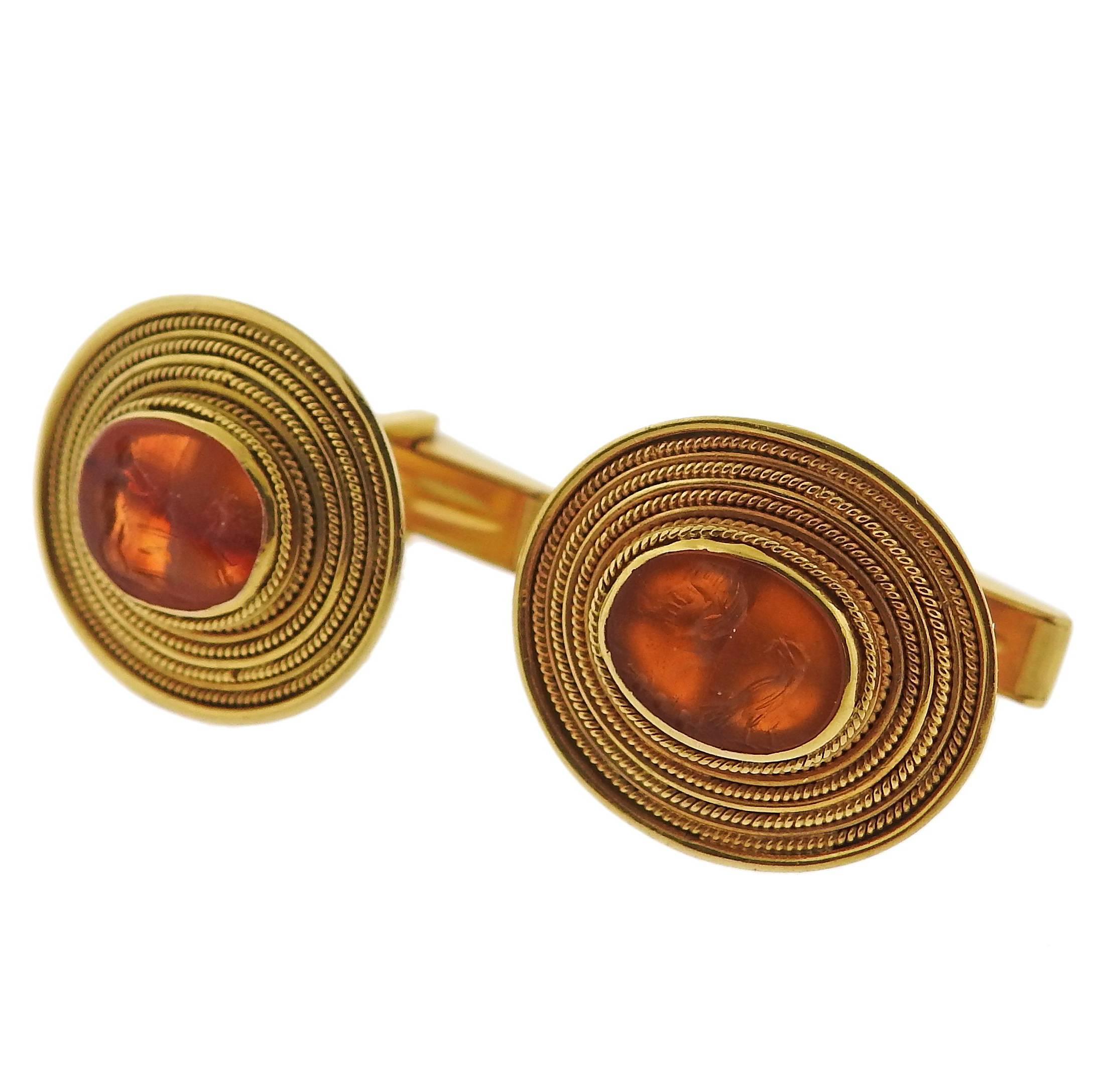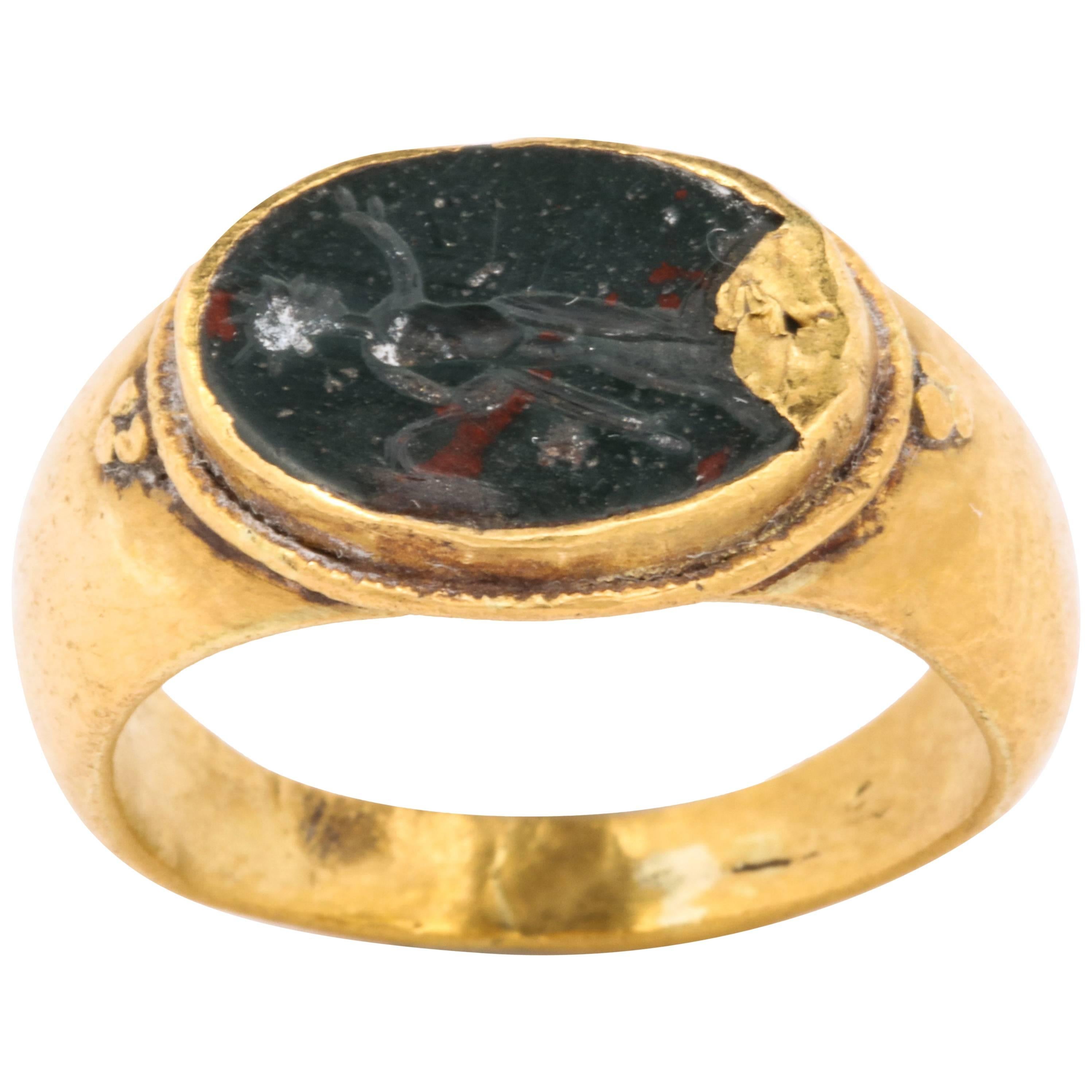

There are other depictions and inscriptions, one of the inscriptions is the "S C" (Senatus Consulto) of the Roman Senate. It is evident that the two boy figures are Romulus and Remus and that the two serpents are symbolic of the Aventine and Palatine hills. Finely when seen from the other side, it is a serpentine man with an unknown serpentine animal. When seen from one side, it is two semi-coiled serpents. When seen upside down, it is a boy holding a crested bird (wood pecker). When turned slightly the letters will change and appear as an abbreviation for the Palatine. The letters appear to be an abbreviation for the "Aventine". This figure eight letter is also made as a bear drinking from a cup, when slightly turned the bear will change into a wolf. Although somewhat worn, it has miniature art on the inside, with this there are Roman letters and one large Etruscan or Oscan figure eight letter (thought to be for the Roman letter "F"). The following depictions and inscriptions are not seen with the pictures provided. Picture 7 shows a boy in a conical hat, this should be a Penates or Lares. The figures overhead may be either ancestors, semi-divine, or celestial figures. Therefore the symbolism must be of Romulus and his ploughing of a square (in order to found Rome). Under the face there are the Roman letters "ARO", this should be a Roman reference to ploughing. On the helmet's crest there are several stacked figures, the bottom figure is in a balcony that is also the helmet's visor. Pictures 5 and 6 show a man's face in an Roman Attic helmet. Pictures 3 and 4 show small figures and the letters "M' and "R". There are figures behind this that may symbolize the hunting of that animal. Picture 2 shows an animal's head, it may be a horse or a deer's head. There are two areas on one side of the ring's edge that have engravings seen with the followig pictures.

The following can be seen with the pictures provided: Picture 1 shows the ring itself. There were two classes of Romans who wore "The Gold Band", those of the Senatorial class (the Nobles) and those of the Equestrian class (the Roman Knights or lesser Nobles). So it can assumed that the Optio had also received these awards at that time, or earlier on. There is also an image of a bare headed legionary wearing torcs, armilla, and a large phalera. The Corona Civica was the highest Roman award for individual bravery, it was awarded to Romans only for saving the life of a fellow Roman in action, that is while taking and holding that specific ground until the completion of the battle. The images are precise, so it can be speculated that it was policy at least under Sulla that the gold band ring was awarded along with the coveted Corona Civica award. This hints that the gold band ring of the aristocrats may have replaced the iron band ring (if there ever was such a thing) of the same under Sulla. There is also new information with the inscriptions and art on the inside of the ring, as there has not yet been an attempt to photograph these, then there are currently no pictures with this information: It specifically shows that the original owner of this ring had been an Optio Centurionis (a second to a Centurion) when he received this gold band ring along with the Corona Civica (Civic Crown) during the dictatorship of Sulla. It may have been lightly engraved as to have the wreath motif known only to the wearer, at any rate it will not appear when photographed. Around the entire ring there are light engravings of a wreath with various figures intertwined, it is extremely worn. There is new information on the outside of the ring. Origin: An Antiquities Dealer from New York


 0 kommentar(er)
0 kommentar(er)
